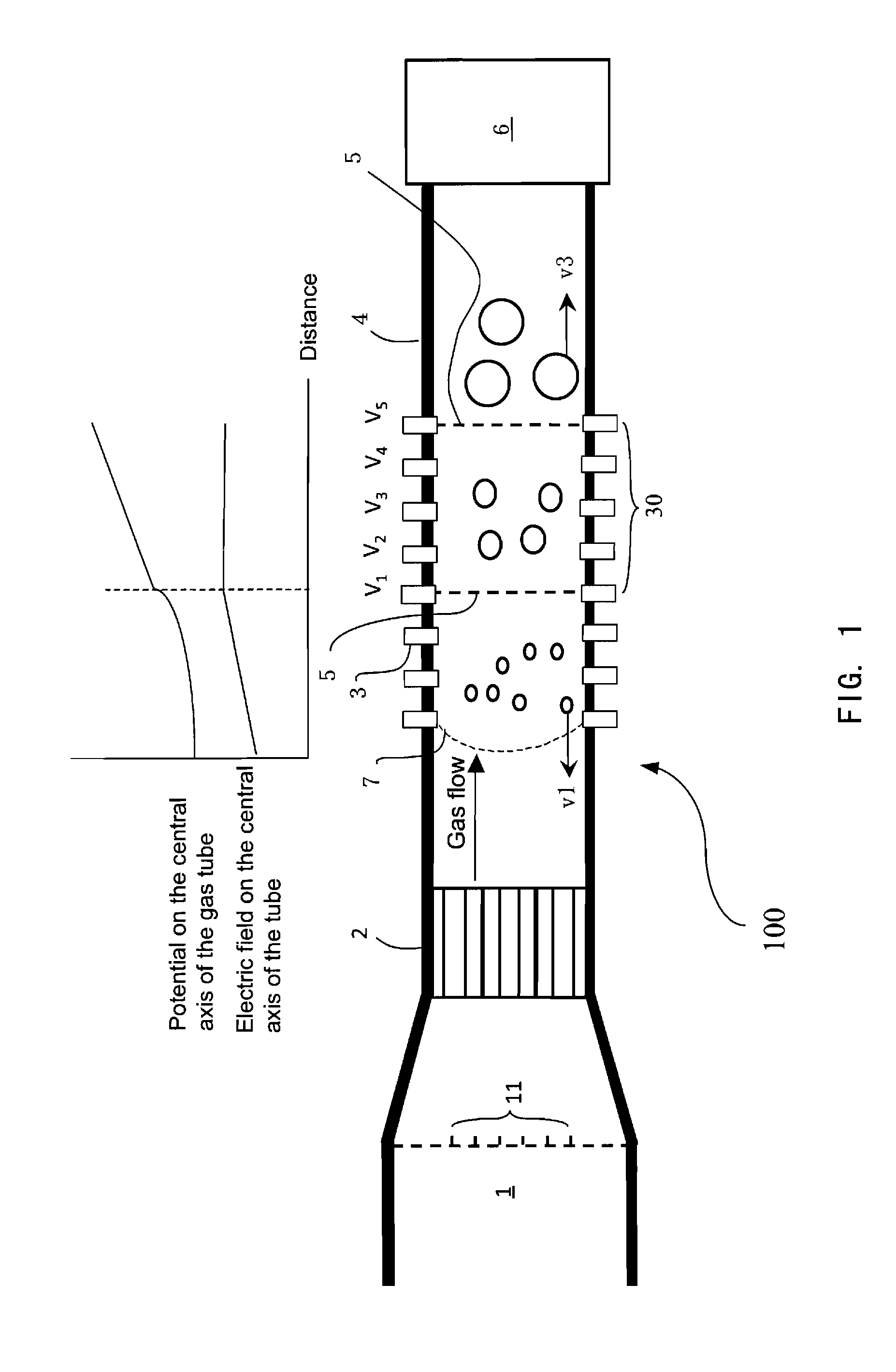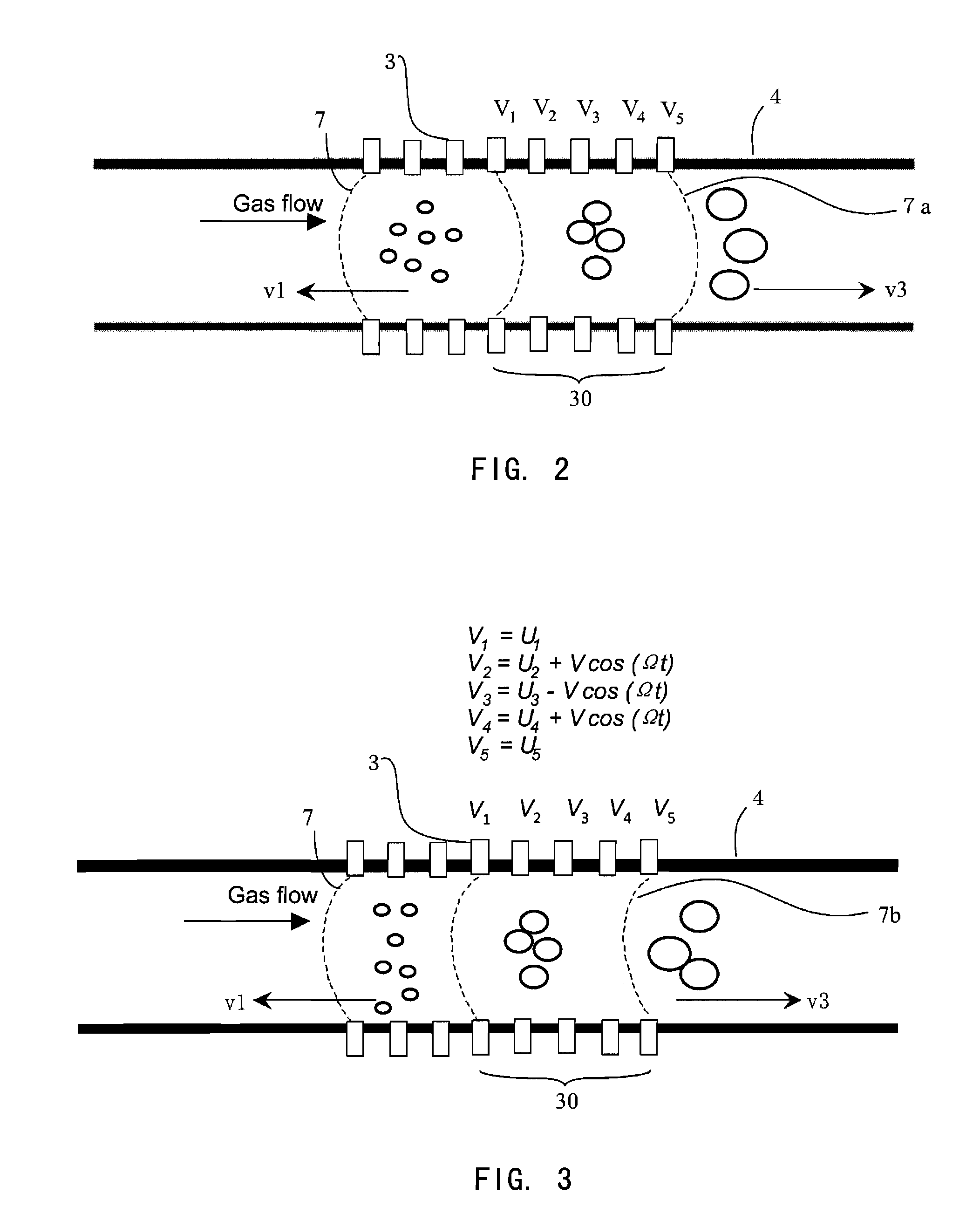Device for separating, enriching and detecting ions
a technology for detecting devices and ions, applied in the field of enrichment and detection of chemicals, can solve the problems of easy to miss the contaminated part, the number of analyte cannot be absorbed, and the adsorption and desorption of analyte requires a relatively long time, so as to enhance the detection efficiency, increase the ion enrichment time, and maintain the spatial resolution of the device
- Summary
- Abstract
- Description
- Claims
- Application Information
AI Technical Summary
Benefits of technology
Problems solved by technology
Method used
Image
Examples
Embodiment Construction
[0040]This invention involves sample enrichment, separation, and detection after ionization in the gas phase. The invention is especially advantageous for detecting trace amount of substance such as explosives and illicit drugs concerned by public security department.
[0041]As shown in FIG. 1, the gas containing analytes enters the ion enrichment device from the left side of device 100 of the gas tube 4. The gas containing analytes will go through a continuous ion source before entering the gas tube 4. In order to rapidly ionize the trace amount of analyte in the gas flow, the ion source 1 can be an array of corona or glow discharge ion source with discharge needle array. Compared with the single needle discharge source used in normal ion source, the present design has better ionization efficiency with multiple discharge needles 11 located on different positions of the cross section of the gas tube 4. For such an ion source, one can change the polarity of the voltage applied on the n...
PUM
 Login to View More
Login to View More Abstract
Description
Claims
Application Information
 Login to View More
Login to View More - R&D
- Intellectual Property
- Life Sciences
- Materials
- Tech Scout
- Unparalleled Data Quality
- Higher Quality Content
- 60% Fewer Hallucinations
Browse by: Latest US Patents, China's latest patents, Technical Efficacy Thesaurus, Application Domain, Technology Topic, Popular Technical Reports.
© 2025 PatSnap. All rights reserved.Legal|Privacy policy|Modern Slavery Act Transparency Statement|Sitemap|About US| Contact US: help@patsnap.com



